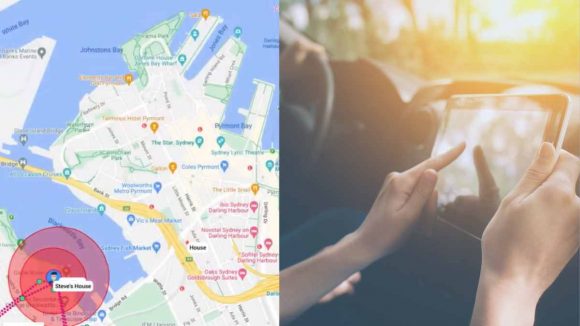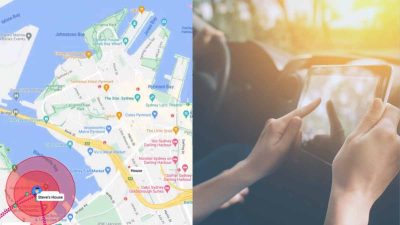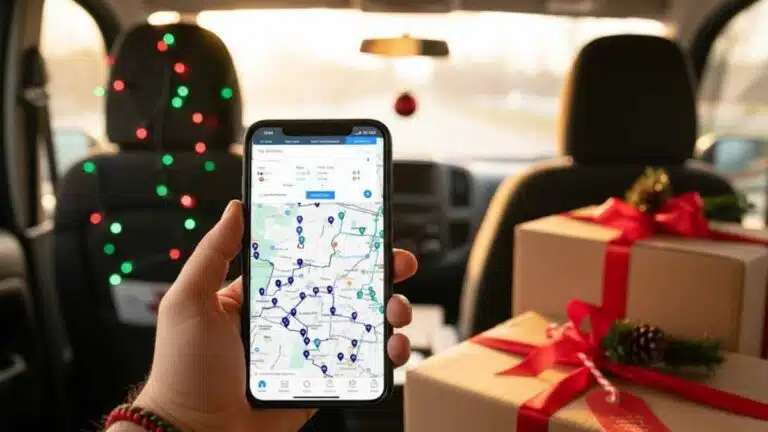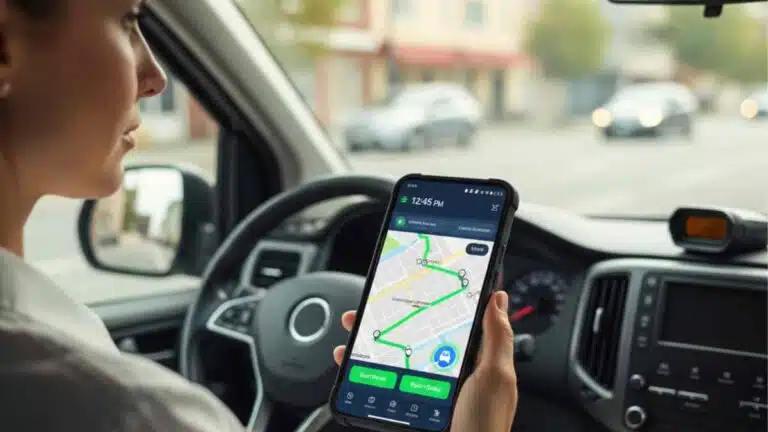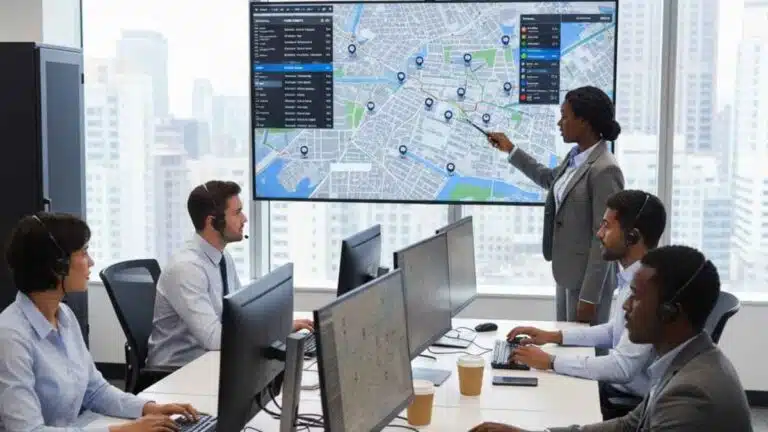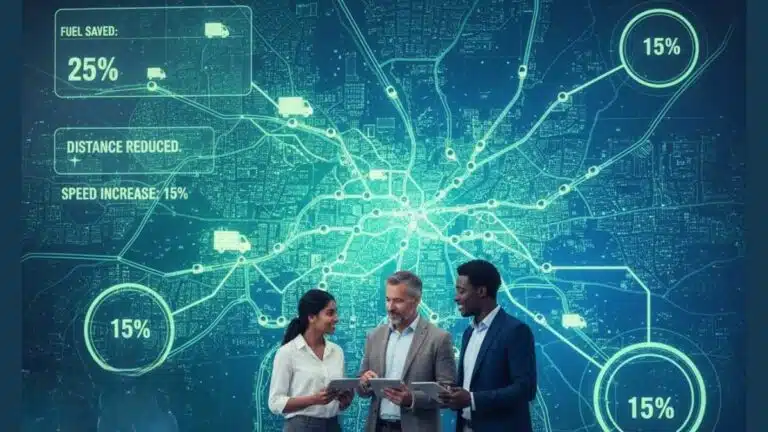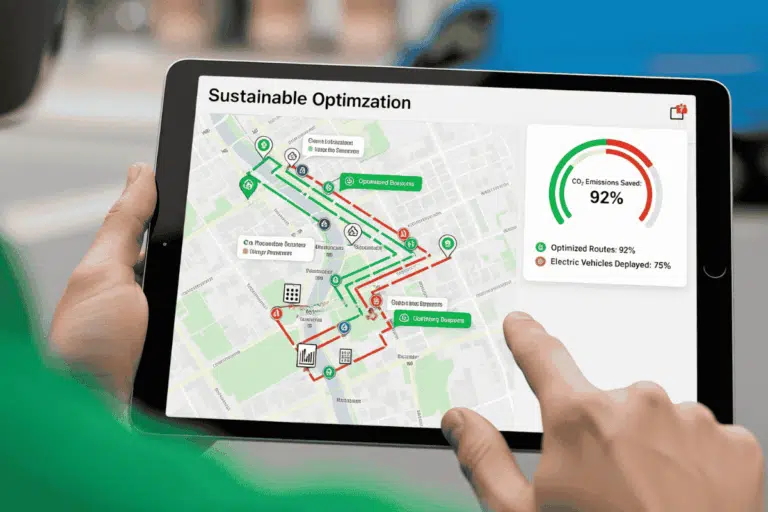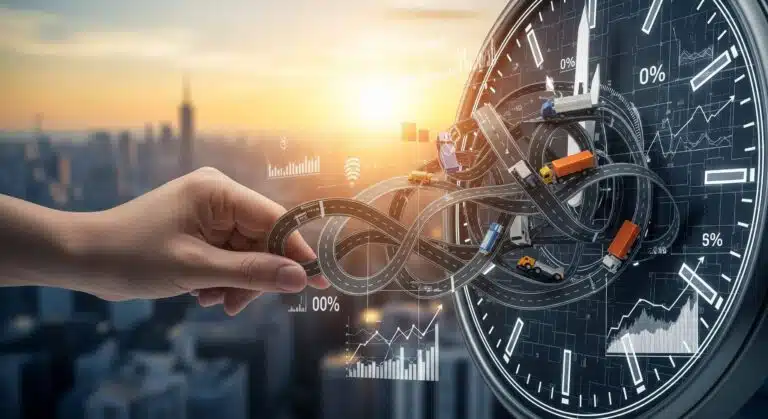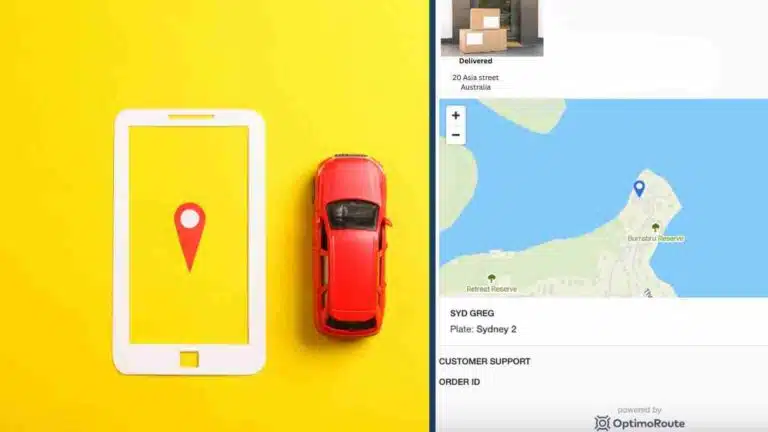Geofencing is your silent guardian. It ensures that every delivery, and every moment is accounted for.
It’s not only used to keep track of fleet and driver behavior, but it plays a pivotal role in empowering your team to be more productive and efficient.
What can you use it for:
- Warehouses: To monitor drivers’ start and end of their shifts.
- Customer delivery points: To track when drivers arrive and when they leave.
- Restricting zones: Areas like no parking areas can be marked to avoid fines and ensure drivers are complying.
Chief of Product at Locate2u Mark Power has over 20 years of experience in transport and logistics, and he says geofencing helps improve productivity and visibility.
“You can analyze how much time your drivers spend in specific areas, identify inefficiencies, and make decisions to improve processes.”
Power believes there are five prominent benefits businesses can enjoy by using geofencing.
- It increases the team and business productivity.
- It gives customers visibility and transparency into where their delivery is.
- Drivers are more accountable.
- It gives managers operational insights to make better decisions.
- It gives businesses a competitive edge.
In this article, we’ll look at all five of these benefits and how geofencing can help grow your business.
What is Geofencing?
Geofencing is when you draw virtual borders around a location, place, or person. It could be the office, a warehouse, a customer, or a staff member.
By defining the virtual borders, the technology allows you to monitor when a mobile device enters or exits a geofenced area.
Geofencing is specifically useful for improving fleet management.
Here’s an example: It can track the exact times a driver enters or leaves a delivery site. This triggers an alarm that sends an automatic notification.
This helps businesses track movement, gather data, and define areas to increase work productivity.
Power says most geofencing doesn’t have any limits on how many virtual boundaries you can set.
“We have various triggers that tell you if a driver entered or exited a geofence.
It can operate in the background, and you can run a report at the end of the week or month to see how much time your fleet or a specific driver spent inside that defined area.
This data is useful for KPIs, measuring waiting times, and other purposes.”

Types of geofencing
There is standard geofencing and a more advanced version called geofence events.
The difference between the two is that geofence events give more advanced details that are beneficial to customers without creating extra work for fleet managers.
A standard geofence interacts with the driver app. For instance, the driver manually updates his status when the delivery is completed.
Whereas with geofence events, a business can set up rules to automate this process. Power explains that at Locate2u, they set up geofences to notify customers when a driver is within a certain distance.
It can also mark deliveries as completed when the driver exits a geofence. However, customers have the freedom to set up any rules they prefer that work for their unique business. “Maybe if the driver leaves 100 m from that delivery point, it can automatically complete that delivery.”
ALSO READ: What is a driver app?
How does geofencing work?
Geofence is a location-based technology that uses cellular data, GPS, Wi-Fi, or radio frequency identification (RFID) to define a virtual boundary around a specific geographic location.
It uses the Global Positioning System (GPS) to track the exact location of a mobile device or GPS device.
The moment a driver leaves the set virtual fence, geofencing is used to send in-app notifications to users. This way they’ll know exactly when someone entered the geofenced area marked off around the physical location.
This could be via emails to users or in-app notifications.
If there is a driver in a particular location, you can see on the map where those drivers are in real-time.
This way you can monitor if a driver is clocking in at a warehouse or leaves the warehouse according to arranged schedules.
Benefits of geofencing
Some customers use geofencing for crucial information about deliveries and drivers.
Mark Power says there are different usages for geofencing technology.
- Some use it to track how much time is spent at a customer’s location over a month.
- Others use it for real-time alerts—when a driver enters or leaves a specific area.
- And another group may set up geofences at the start location. If a driver doesn’t check in by a specific time, it can prompt action.
Here are five benefits of geofencing.
Improving productivity and visibility
Virtual boundaries provide insight into how long drivers spend in a specific area. This can help managers review each driver’s productivity. If a driver is not operating efficiently, it can easily be addressed.
Power says geofencing helps with the overall productivity of your fleet, team, and visibility as well. “Once you manage to identify that hiccup in that process, you can then fix it.”
The technology helps businesses to identify bottlenecks, like extended waiting times at a customer’s site, and correct and improve processes.

Virtual boundaries improve customer transparency
With geofence, dispatchers know exactly where drivers are. At the same time, it enables businesses to provide customers with real-time updates about driver movements.
This builds trust and improves customer engagement. “It’s like a self-service functionality… the customer can monitor it and self-serve,” says Power.
Customers can independently access relevant information that they are looking for, to get better insight on how to address a certain hiccup.
Active geofences increase accountability
Drivers are more accountable when they know their movements are tracked and recorded.
Geofence defines guidelines for drivers, helping them understand what is expected of them and that if they are not abiding by the rules, there will be repercussions.
Power believes it has added value for drivers: “For instance, if a driver gets paid hourly, geofences can automate timesheets by recording entry and exit times from specific geofences. This reduces admin work for drivers.”
Virtual perimeters boost operational insight
Meaningful discussions can take place once a business has access to valuable information gathered from geofences.
It helps a business to identify and then correct operational inefficiencies. This would include long loading times.
This creates an opportunity to negotiate terms or streamline workflows. Power describes the tech as a “snapshot of existing productivity.” With the accumulated information, better business decisions can be made.
Gives your business a competitive edge
Geofencing gives businesses a competitive advantage by targeting customers in a geographic location.
Knowing more about customers’ needs in a certain geographical location helps create a marketing strategy to capture this audience more effectively.
WATCH: How geofencing can help your business
Common concerns about geofencing clarified
You might wonder how it works when your drivers are in areas with limited network coverage. Or if the driver’s phone dies, will there be no data collected?
Let’s look at those concerns and how the tech has been developed to maintain great performance.
Concern 1: Geofencing stops working in areas without network coverage
Power explains that Locate2u’s geofence tech records GPS data even in rural areas without mobile coverage.
Even if the driver has no network for a long period, once the device regains connectivity, all data is uploaded. So, although there is a delay, the full journey will be retrospectively shown.
Concern 2: Geofencing requires additional expensive hardware
Geofencing works with both the Locate2u driver app and hard-wired GPS trackers. Businesses can use the app on a smartphone without investing in extra devices.
Learn more about GPS tracking software.
Concern 3: If a driver’s phone dies, the data is lost
The real-time tracking pauses if a device is off or out of power. However, the information captured up until that moment is not permanently lost.
Concern 4: Setting up geofences is complicated
It might sound complicated, but setting up geofences is quite simple. Users draw boundaries with a mouse, name the geofences, and start tracking in minutes.
How to set up geofencing
Here’s a guide on how to set up geofences for your fleet.
- First, enable your location services. If you are using cellular data, go to your device’s location settings and make sure the location service is turned on.
- Now, create geofences by selecting the area where you want to create the virtual boundary.
- Use your cursor to draw the fence, creating a shape. Then, close the boundaries by clicking the starting point.
- To keep it organized, name the virtual perimeter.
- And lastly, save the changes.

Why does your company need geofencing?
Geofencing is a powerful tool for businesses that can boost communication, accountability, and productivity and find shortfalls before they cost money to fix.
By understanding how geofencing works and its applications, businesses can set clear boundaries for drivers or automate delivery communication, which can improve customer satisfaction.
With the right strategy and implementation, geofencing can be a valuable addition to your company.
NOW READ: The Impact of GPS Tracking Software on Delivery Speed and Accuracy
About the author
Mia is a multi-award-winning journalist. She has more than 14 years of experience in mainstream media. She's covered many historic moments that happened in Africa and internationally. She has a strong focus on human interest stories, to bring her readers and viewers closer to the topics at hand.

